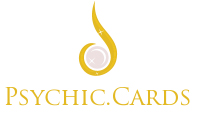Four elements which are Earth, Air, Fire, and Water, were the basis of our universe during the era of ancient philosophy, astrology, and medicine. Throughout the history of the Tarot, each suit evolved to represent one of the classic elements.
Tarot suits, the corresponding elements, and the symbolism and characteristics of each one:
Wands — Element: Fire
Wands represent the element of Fire, suggesting a powerful but uncertain energy. In a reading, Wands can relate to a variety of moving personalities: creative thinkers, artists, visionaries, psychics, and mystics. These personalities may inspire others, but they need nurturing and support before their revelations become part of reality. Routine and frustration can equally overwhelm the passion of fire.
Prevalence of Wands in a Tarot spread indicates optimism or creativity and links regularly to travel, new undertakings, agreements, and negotiations. In addition, Wand court cards in a Tarot spread often define an extroverted and energetic person, someone filled with exuberance and a bit of drama.
Pentacles — Element: Earth
Pentacles denote the element Earth, the concrete, physical world. It speaks of the realm of our senses. As a firm foundation (“Terra Firma”) for solid ideas, Pentacles indicate a degree of common sense, where hard work is behind every brilliant perception. Earth represents physicality related to both sexuality and the desire for material comforts. Pentacles signify wealth, material things, and commercial or financial matters.
In a Tarot spread with Pentacle court cards, they identify a sensible person, someone who is able to work hard to obtain material comforts that money can buy. Look for individuals like managers, bankers, accountants, or farmers.
Swords — Element: Air
Swords symbolize the element of Air, with intelligent, cerebral activity, as well as thought and lucid points of view. This suit represents the world of science and organized thinking. A preponderance of Swords refers to a state of mind as opposed to any concrete event. The reading could indicate passions for knowledge, learning, and observation.
The individuals specified by Swords are intellectuals, people with the ability to analyze and organize information. However, they are unable to express inner feelings and emotions. They are highly educated individuals that seem distant, aloof, and cold. People of Swords possess strong emotions but have a hard time communicating those feelings. These are scientists, researchers, doctors, and military leaders.
Cups — Element: Water
Cups represent Water, which speaks about the fluidity of emotions and feelings. Water is the nurturer of life and development. It is the key component of our physical bodies as well as our inner passions. The prevalence of Cups in a Tarot reading talks of sensitivity, relationships, and personal exchanges. It also refers to a bond with animals and all of nature.
Readings where Cups court cards appear indicate a highly emotional person. Relationships and a healthy social life are vital for people ruled by Water. They are kind, generous, softhearted, and they truly care about the welfare of others. They are psychiatrists, counselors, and social workers.


The connection between the Tarot suits and the four classical elements adds a rich dimension to understanding Tarot readings. It’s intriguing to see how these ancient concepts are woven into the interpretation of modern Tarot cards. This historical linkage enriches the practice, offering depth and context.
This explanation provides a structured overview of how each Tarot suit corresponds to one of the classical elements. It’s informative for those interested in the symbolic and historical aspects of Tarot. The delineation of personality types associated with each suit is particularly insightful.
The historical context of associating the four classical elements with the Tarot suits is fascinating. Understanding the deep symbolism behind each suit can indeed add layers of meaning to a Tarot reading. It’s particularly interesting how each element aligns with different personality types and professional roles.
This article provides a clear and concise explanation of the elemental associations within the Tarot suits. It’s useful for both seasoned practitioners and those new to Tarot. The attributes and professional inclinations linked to each suit based on their elemental properties are well-depicted.
The breakdown of the Tarot suits according to their elemental associations offers a compelling framework for interpreting the cards. This historical insight underscores the enduring relevance of ancient philosophies in contemporary practices like Tarot reading. The description of personality traits tied to each suit is quite helpful.